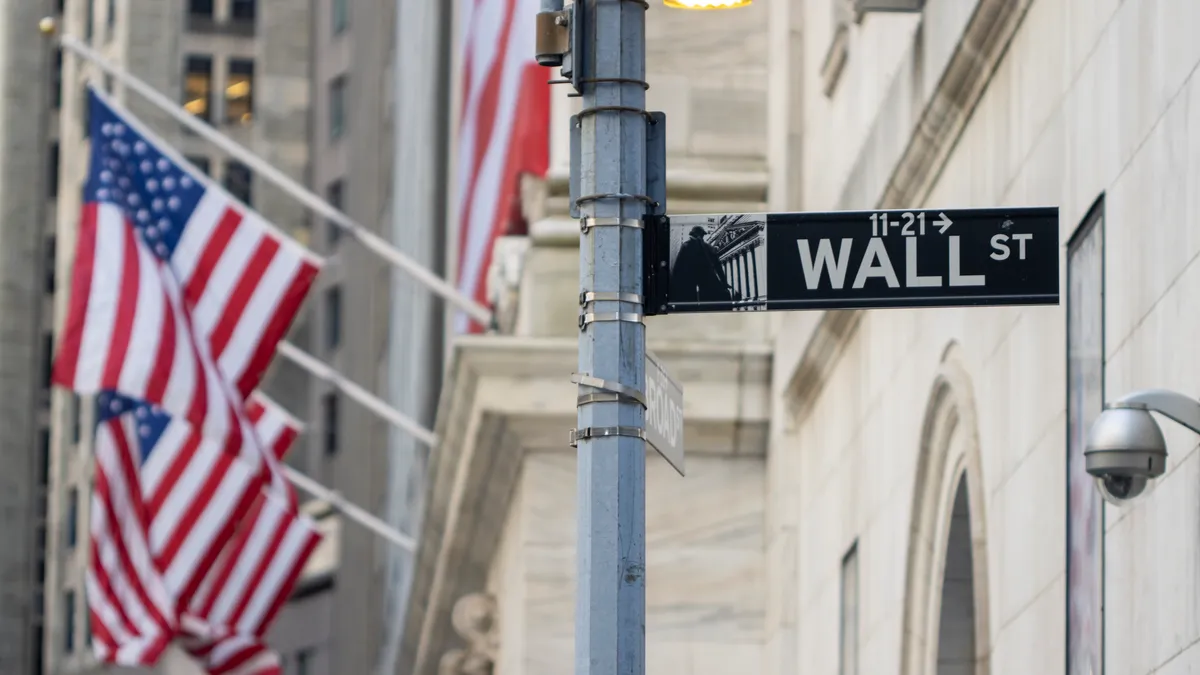Dive Brief:
- U.S. initial public offerings have raised $27.3 billion during the first nine months of this year, 40% more than the same period in 2023, but well below levels early this decade, according to EY.
- The payoff for companies that turned to the IPO market during the period exceeded returns on benchmark stock indexes, yielding average gains of 23.9% compared with increases ranging from 10.4% to 18.1% in the S&P 500 Index, the NASDAQ and the Dow Jones Industrial Average, according to EY’s Q3 report on IPOs shared with CFO Dive.
- “A regular cadence of interest rate cuts, alongside sustained economic strength and favorable inflation readings, would reduce the cost of capital and spark IPO activity,” Mark Schwartz, EY Americas IPO and SPAC advisory leader, said Friday in an email response to questions.
Dive Insight:
Despite an emerging recovery in IPOs, several headwinds persist, including conflicts abroad, the risks of an economic downturn, the hard-to-predict outcome of the Nov. 5 elections and the possibility for post-election shifts in government policy, EY said.
“IPO candidates and bankers are in ‘Proceed with Caution’ mode right now, primarily due to the upcoming election,” Schwartz said.
Executives considering an IPO often look favorably on the post-election period. U.S. IPO activity in the years after an election on average exceeds the rate during an election year by 39%, according to EY.
Plans by the Federal Reserve to trim the cost of borrowing will likely spur IPO activity, Schwartz said.
The central bank on Sept. 18 cut the main interest rate to a range between 4.75% and 5%. Central bank officials expect to trim the federal funds rate to 4.4% by December and to 3.4% by the end of next year, according to their median projections released last week.
IPOs will approach their previous record if the stock “market rally broadens to include small- and medium-cap growth companies,” Schwartz said.
Also, companies will be more inclined to go public if “the aftermarket performance of today’s IPOs gets more ‘exciting’” and concerns fade over inflation, the possibility of recession and geopolitical turmoil, he said.
Investor anxieties have eased since August, when the CBOE Volatility Index hit the highest level in four years amid turbulence in technology stocks, “the increasingly contentious presidential race” and weak data on the economy, EY said in its Q3 IPO report.
Under current conditions CFOs considering an IPO should not delay getting to know their long term “shareholder targets,” Schwartz said. “IPO investing is more about relationships today than it was historically.”
CFOs should also not delay in upgrading their “business and financial models,” which “will be the foundation for your success as a public company,” he said.
Financial executives should also consider alternatives to an IPO, he said, noting that “the IPO market is temperamental and should be approached from a position of strength.”
EY compiled its IPO data by drawing from confirmed transactions as of Sept. 16 and IPOs expected through the end of September.















